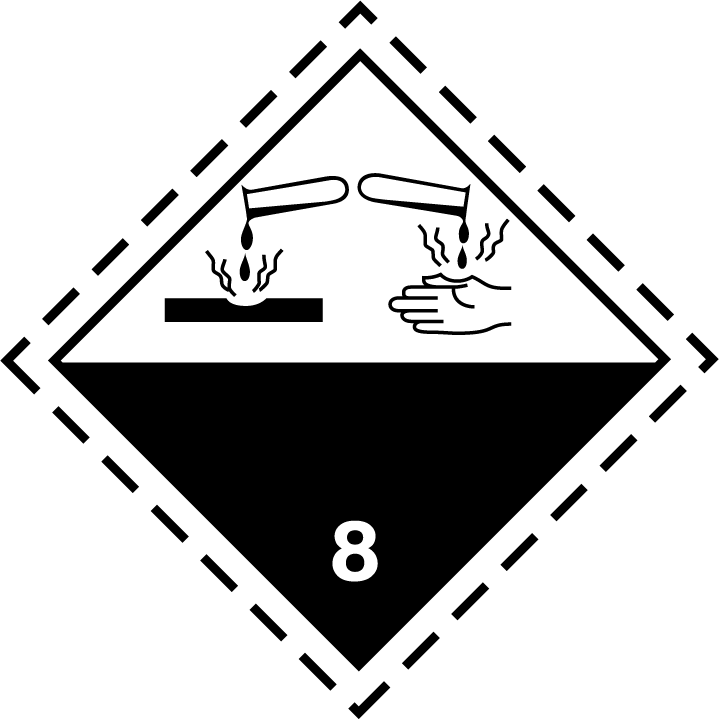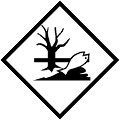SAFETY DATA SHEET
Glutaraldehyde 25% Solution, Biological Grade
1. IDENTIFICATION
Product Identifiers
Product Name:
Glutaraldehyde 25% Solution, Biological Grade
Other Names:
Not available.
Product Number(s):
16400, 16401, 16410, 16411, EMS16400, EMS16401, EMS16410, EMS16411
CAS Number:
111-30-8
Recommended use of the chemical and restriction on use
Laboratory chemicals.
Company Details
ProSciTech Pty Ltd
11 Carlton Street
KIRWAN QLD 4817
Australia(07) 4773 9444www.proscitech.com
11 Carlton Street
KIRWAN QLD 4817
Australia(07) 4773 9444www.proscitech.com
Emergency Contact Details
ProSciTech Pty Ltd
11 Carlton Street
KIRWAN QLD 4817
Australia(07) 4773 9444www.proscitech.com
11 Carlton Street
KIRWAN QLD 4817
Australia(07) 4773 9444www.proscitech.com
2. HAZARDS IDENTIFICATION
Classification of the substance or mixture
GHS06 Skull and crossbones
Acute Tox. 2 H330 Fatal if inhaled.
GHS08 Health hazard
Resp. Sens. 1 H334 May cause allergy or asthma symptoms or breathing difficulties if inhaled.
GHS05 Corrosion
Skin Corr. 1B H314 Causes severe skin burns and eye damage.
Eye Dam. 1 H318 Causes serious eye damage.
GHS07
Acute Tox. 4 H302 Harmful if swallowed.
Skin Sens. 1 H317 May cause an allergic skin reaction.
STOT SE 3 H335 May cause respiratory irritation.
Flam. Liq. 4 H227 Combustible liquid.
Acute Tox. 2 H330 Fatal if inhaled.
GHS08 Health hazard
Resp. Sens. 1 H334 May cause allergy or asthma symptoms or breathing difficulties if inhaled.
GHS05 Corrosion
Skin Corr. 1B H314 Causes severe skin burns and eye damage.
Eye Dam. 1 H318 Causes serious eye damage.
GHS07
Acute Tox. 4 H302 Harmful if swallowed.
Skin Sens. 1 H317 May cause an allergic skin reaction.
STOT SE 3 H335 May cause respiratory irritation.
Flam. Liq. 4 H227 Combustible liquid.
Label Elements




Signal Words
Danger
Hazard Statement(s)
Combustible liquid.
Harmful if swallowed.
Fatal if inhaled.
Causes severe skin burns and eye damage.
May cause allergy or asthma symptoms or breathing difficulties if inhaled.
May cause an allergic skin reaction.
May cause respiratory irritation.
Harmful if swallowed.
Fatal if inhaled.
Causes severe skin burns and eye damage.
May cause allergy or asthma symptoms or breathing difficulties if inhaled.
May cause an allergic skin reaction.
May cause respiratory irritation.
Precautionary Statement(s)
Keep away from flames and hot surfaces. - No smoking.
Do not breathe dusts or mists.
Wash thoroughly after handling.
Do not eat, drink or smoke when using this product.
Use only outdoors or in a well-ventilated area.
Contaminated work clothing should not be allowed out of the workplace.
Wear protective gloves/protective clothing/eye protection/face protection.
Wear respiratory protection.
Do not breathe dusts or mists.
Wash thoroughly after handling.
Do not eat, drink or smoke when using this product.
Use only outdoors or in a well-ventilated area.
Contaminated work clothing should not be allowed out of the workplace.
Wear protective gloves/protective clothing/eye protection/face protection.
Wear respiratory protection.
Primary route(s) of entry
Human Health
Inhalation:
Remove victim to fresh air and keep at rest in a position comfortable for breathing. If experiencing respiratory symptoms: Call a POISON CENTER/doctor.
Ingestion:
Call a POISON CENTER/ doctor if you feel unwell. Rinse mouth. Do NOT induce vomiting.
Eyes:
Rinse cautiously with water for several minutes. Remove contact lenses, if present and easy to do. Continue rinsing. Immediately call a POISON CENTER/doctor.
Skin:
(or hair) remove/take off immediately all contaminated clothing. Rinse skin with water/shower. If skin irritation or rash occurs: Get medical advice/attention. Wash contaminated clothing before reuse.
Environment
In case of fire: Use for extinction: CO₂, powder or water spray. Store in a well-ventilated place. Keep container tightly closed. Keep cool. Store locked up. Dispose of contents/container in accordance with local/regional/national/international regulations.
3. COMPOSITION/INFORMATION ON INGREDIENTS
Name
CAS No.
Content (w/w)
Classification
Glutaraldehyde
111-30-8
>10-≤25%
Mixtures
4. FIRST AID MEASURES
Ingestion
Call for a doctor immediately.
Drink plenty of water and provide fresh air. Call for a doctor immediately.
Drink plenty of water and provide fresh air. Call for a doctor immediately.
Inhalation
Supply fresh air or oxygen; call for doctor.
In case of unconsciousness place patient stably in side position for transportation.
In case of unconsciousness place patient stably in side position for transportation.
Skin Contact
Immediately wash with water and soap and rinse thoroughly.
Eye Contact
Rinse opened eye for several minutes under running water. Then consult a doctor.
Other Information
Immediately remove anu clothing soiled by the product.
Symptoms of poisoning may even occur after several hours; therefore medical observation for at least 48 hours after the accident.
Remove breathing equipment only after contaminated clothing have been completely removed.
In case of irregular breathing or respiratory arrest provide artificial respiration.
Symptoms of poisoning may even occur after several hours; therefore medical observation for at least 48 hours after the accident.
Remove breathing equipment only after contaminated clothing have been completely removed.
In case of irregular breathing or respiratory arrest provide artificial respiration.
5. FIREFIGHTING MEASURES
Suitable extinguishing equipment
CO₂, powder or water spray. Fight larger fires with water spray or alcohol resistant foam.
HAZCHEM
No further relevant information available.
Special protective equipment and precautions for fire fighters
6. ACCIDENTAL RELEASE MEASURES
Personal precautions, protective equipment and emergency procedures
Wear protective equipment. Keep unprotected persons away.
Environmental precautions
Inform respective authorities in case of seepage into water course or sewage system.
Dilute with plenty of water.
Do not allow to enter sewers/surface or ground water.
Dilute with plenty of water.
Do not allow to enter sewers/surface or ground water.
Methods and materials for containment and clean up
Absorb with liquid-binding material (sand, diatomite, acid binders, universal binders, sawdust).
Use neutralising agent.
Dispose of contaminated material as waste according to item 13.
Ensure adequate ventilation.
Use neutralising agent.
Dispose of contaminated material as waste according to item 13.
Ensure adequate ventilation.
7. HANDLING AND STORAGE
Precautions for safe handling
Ensure good ventilation/exhaustion at the workplace.
Open and handle receptacle with care.
Prevent formation of aerosols.
Open and handle receptacle with care.
Prevent formation of aerosols.
Conditions for safe storage
8. EXPOSURE CONTROLS/PERSONAL PROTECTION
Exposure Standards
Engineering controls
Keep away from foodstuffs, beverages and feed.
Immediately remove all soiled and contaminated clothing.
Wash hands before breaks and at the end of work.
Store protective clothing separately.
Avoid contact with the eyes.
Avoid contact with the eyes and skin.
Immediately remove all soiled and contaminated clothing.
Wash hands before breaks and at the end of work.
Store protective clothing separately.
Avoid contact with the eyes.
Avoid contact with the eyes and skin.
Personal protective equipment
Eye and face protection
Tightly sealed goggles.
Skin protection
Wear protective gloves. The glove material has to be impermeable and resistant to the product/ the substance/the preparation. Selection of the glove material on consideration of the penetration times, rates of diffusion and the degradation. The exact break through time has to be found out by the manufacturer of the protective gloves and has to be observed.
Body protection
Not available.
Respiratory protection
In case of brief exposure or low pollution use respiratory filter device. In case of intensive or longer exposure use self-contained respiratory protective device.
9. PHYSICAL AND CHEMICAL PROPERTIES
General information
Appearance
Colourless fluid
Odour
Fruit-like
pH
Not determined
Vapour Pressure
Not determined.
Density
1.129g/cm³
Boiling Point
100°C
Melting Point
undetermined
Solubility
Fully miscible
Specific Gravity of Density
Not available.
Flash Point
71°C
Flammable (Explosive) Limits
Not determined.
Ignition Temperature
Product is not selfigniting
Formula
Organic solvents: 0.3%
Water: 75%
VOC (EC): 0.25%
Water: 75%
VOC (EC): 0.25%
10. STABILITY AND REACTIVITY
Reactivity
No further relevant information available.
Chemical stability
No decomposition if used according to specifications.
Possibility of hazardous reactions
No dangerous reactions known.
Conditions to avoid
No further relevant information available.
Incompatible materials
No further relevant information available.
11. TOXICOLOGICAL INFORMATION
Acute effects
111-30-8 Glutaraldehyde
Oral LD50 134mg/kg (rat)
Dermal LD50 2560mg/kg (rabbit)
Oral LD50 134mg/kg (rat)
Dermal LD50 2560mg/kg (rabbit)
Eye contact
Strong caustic effect.
Strong irritant with the danger of severe eye injury.
Strong irritant with the danger of severe eye injury.
Skin contact
Strong caustic effect on skin and mucous membranes. Sensitisation possible through skin contact.
Ingestion
Swallowing will lead to a strong caustic effect on mouth and throat and to the danger of perforation of esophagus and stomach.
Inhalation
Sensitisation possible through inhalation.
Toxicity and irritation
Harmful
Corrosive
Irritant
Very toxic
Corrosive
Irritant
Very toxic
12. ECOLOGICAL INFORMATION
Ecotoxicity
No further relevant information available.
Persistence and degradability
no further relevant information available.
Bioaccumulative potential
No further relevant information available.
Other adverse effects
Very toxic for fish
Toxic for fish
Water hazard class 3: extremely hazardous for water.
Do not allow product to reach ground water, water course or sewage system, even in small quantities.
Must not reach sewage water or drainage ditch undiluted or unneutralised.
Danger to drinking water if even extremely small quantities leak in the ground.
Also poisonous for fish and plankton in water bodies.
Very toxic for aquatic organisms.
Toxic for aquatic organisms.
Toxic for fish
Water hazard class 3: extremely hazardous for water.
Do not allow product to reach ground water, water course or sewage system, even in small quantities.
Must not reach sewage water or drainage ditch undiluted or unneutralised.
Danger to drinking water if even extremely small quantities leak in the ground.
Also poisonous for fish and plankton in water bodies.
Very toxic for aquatic organisms.
Toxic for aquatic organisms.
13. DISPOSAL CONSIDERATIONS
General information
Must not be disposed of together with household garbage. Do not allow product to reach sewage system. Disposal must be made according to official regulations.
Recommended cleansing agents: Water, if necessary together with cleansing agents.
Recommended cleansing agents: Water, if necessary together with cleansing agents.
14. TRANSPORT INFORMATION
ADG label required


HAZCHEM
No further relevant information available.
UN Number
UN3265
Proper shipping name
3265 CORROSIVE LIQUID, ACIDIC, ORGANIC, N.O.S. (Glutaraldehyde), ENVIRONMENTALLY HAZARDOUS.
Transport hazard class
Class 8 Corrosive substances.
Packing group
III
Environmental hazard
Product contains environmentally hazardous substances: Glutaraldehyde.
Marine pollutant: Symbol (fish and tree)
Special marking (ADG): Symbol (fish and tree)
Marine pollutant: Symbol (fish and tree)
Special marking (ADG): Symbol (fish and tree)
Special precautions for users
Warning: corrosive substances.
Hazard identification number (Kemler code): 88
EMS Number: F-A,S-B
Segregation groups: Acids
Stowage Category: A
Stowage Code: SW2 Clear of living quarters
Hazard identification number (Kemler code): 88
EMS Number: F-A,S-B
Segregation groups: Acids
Stowage Category: A
Stowage Code: SW2 Clear of living quarters
Additional information
Limited quantities (LQ) 5L
Excepted quantities (EQ) Code: E1
Maximum net quantity per inner packaging:30mL
Maximum net quantity per outer packaging:1000mL
Transport category: 3
Tunnel restriction code: E
Excepted quantities (EQ) Code: E1
Maximum net quantity per inner packaging:30mL
Maximum net quantity per outer packaging:1000mL
Transport category: 3
Tunnel restriction code: E
15. REGULATORY INFORMATION
Poisons Schedule Number
111-30-8 Glutaraldehyde S2, S5, S6
67-56-1 Methyl Alcohol S5, S6
67-56-1 Methyl Alcohol S5, S6
Other Information
Seveso category:
H2 ACUTE TOXIC
E1 Hazardous to the Aquatic Environment.
A Chemical Safety Assessment has not been carried out.
H2 ACUTE TOXIC
E1 Hazardous to the Aquatic Environment.
A Chemical Safety Assessment has not been carried out.
16. OTHER INFORMATION
SDS preparation date
27 November 2024
Comments
This information is based on our present knowledge. However, this shall not constitute a guarantee for any specific product features and shall not establish a legally valid contractual relationship.
This Safety Data Sheet (SDS) has been prepared in compliance with the Preparation of Safety Data Sheets for Hazardous Chemicals Code of Practice February 2016. It is the user's responsibility to determine the suitability of this information for adoption of necessary safety precautions. The information published in this SDS has been compiled from the publications listed in Section 16: to the best of our ability and knowledge these publications are considered accurate. We reserve the right to revise Safety Data Sheets as new information becomes available. Copies may be made for non-profit use.